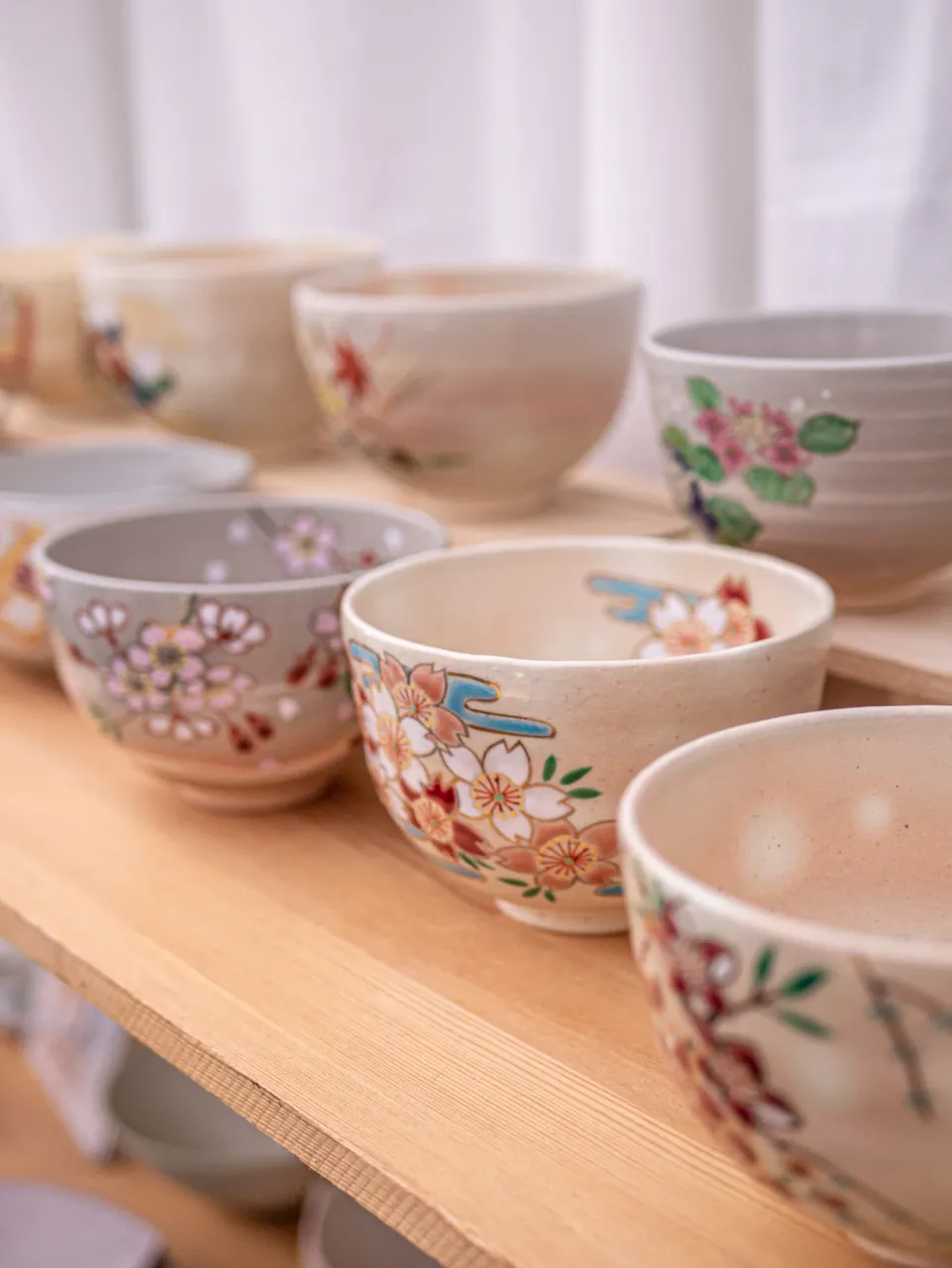
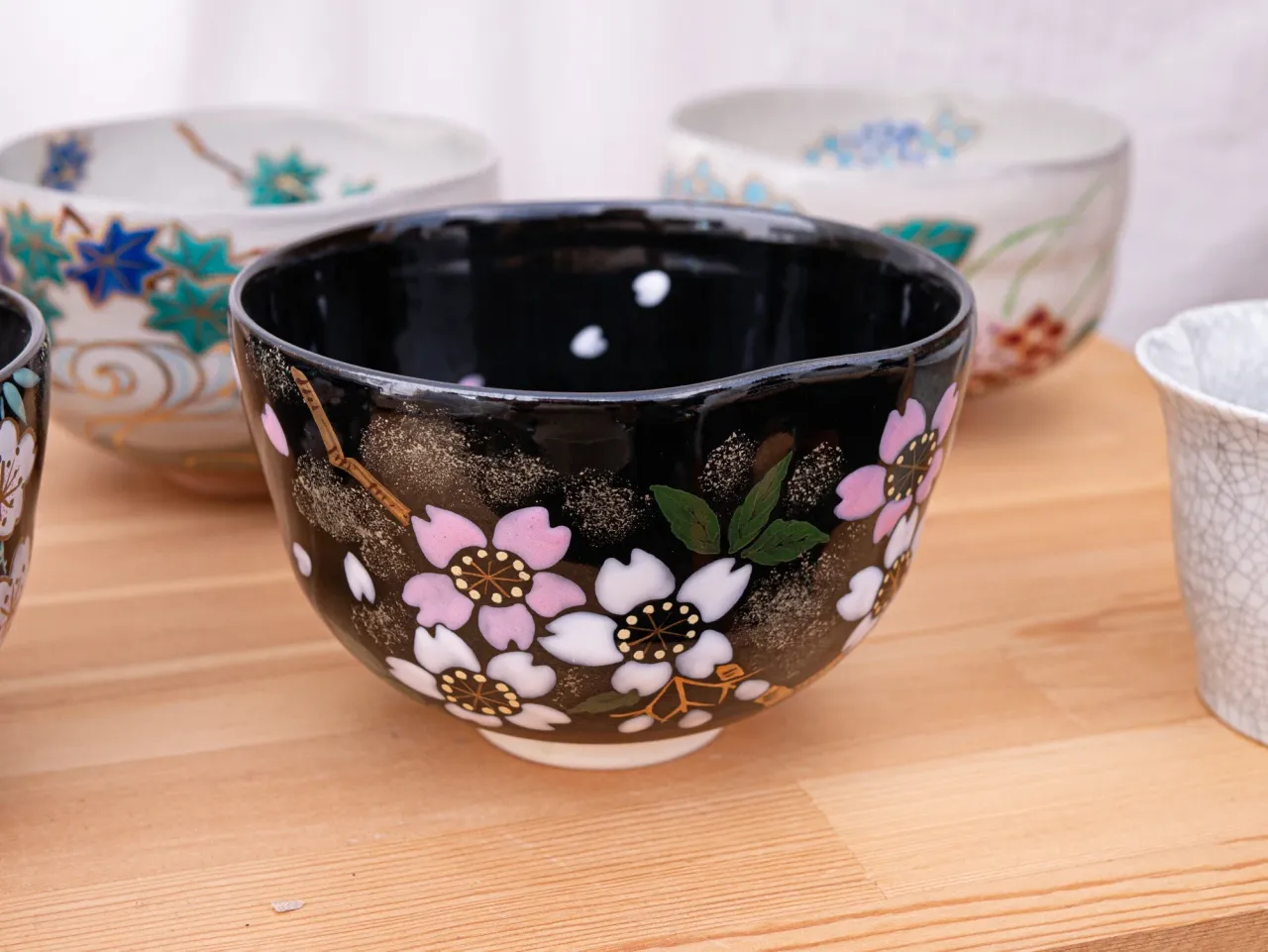
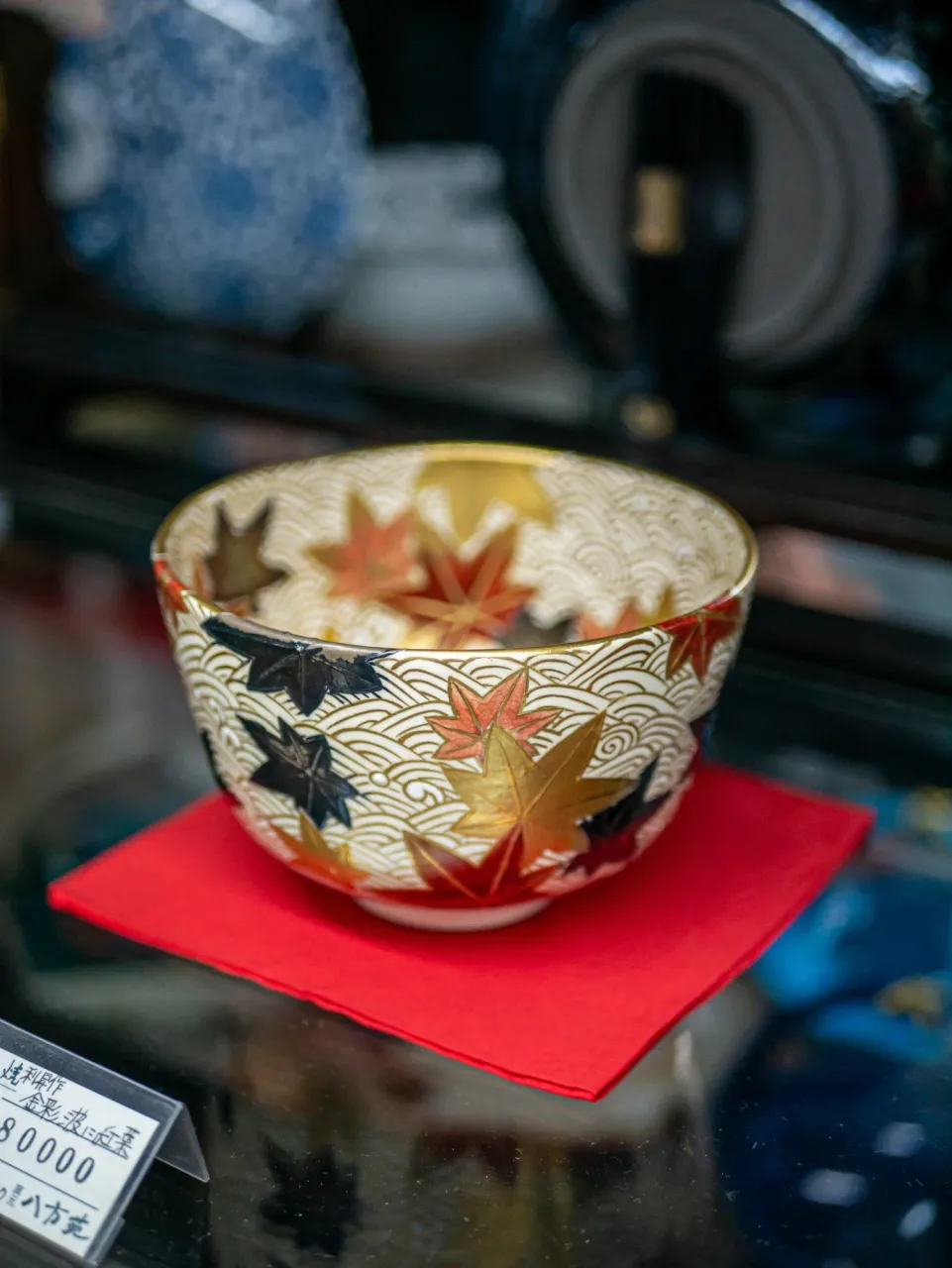
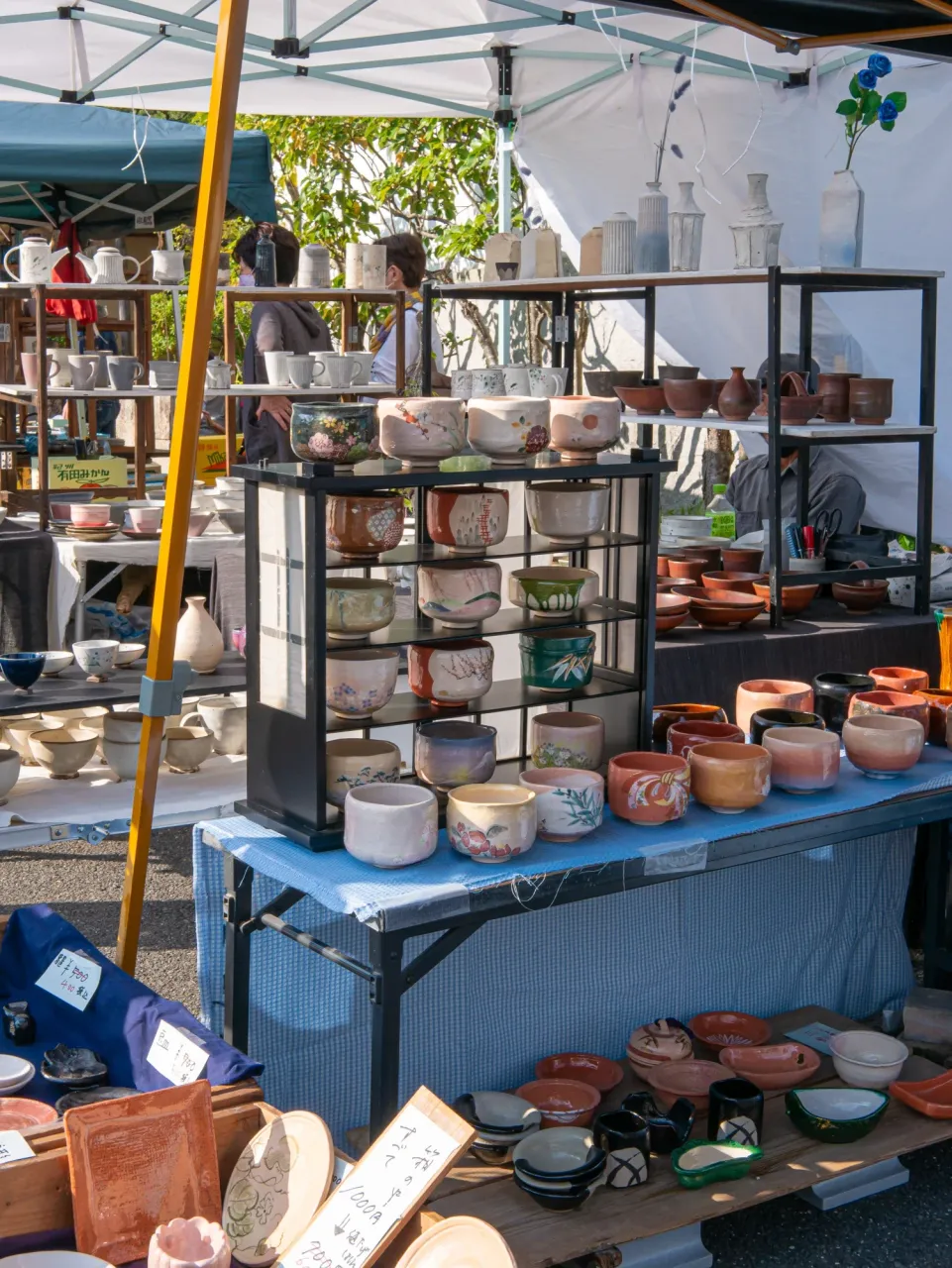
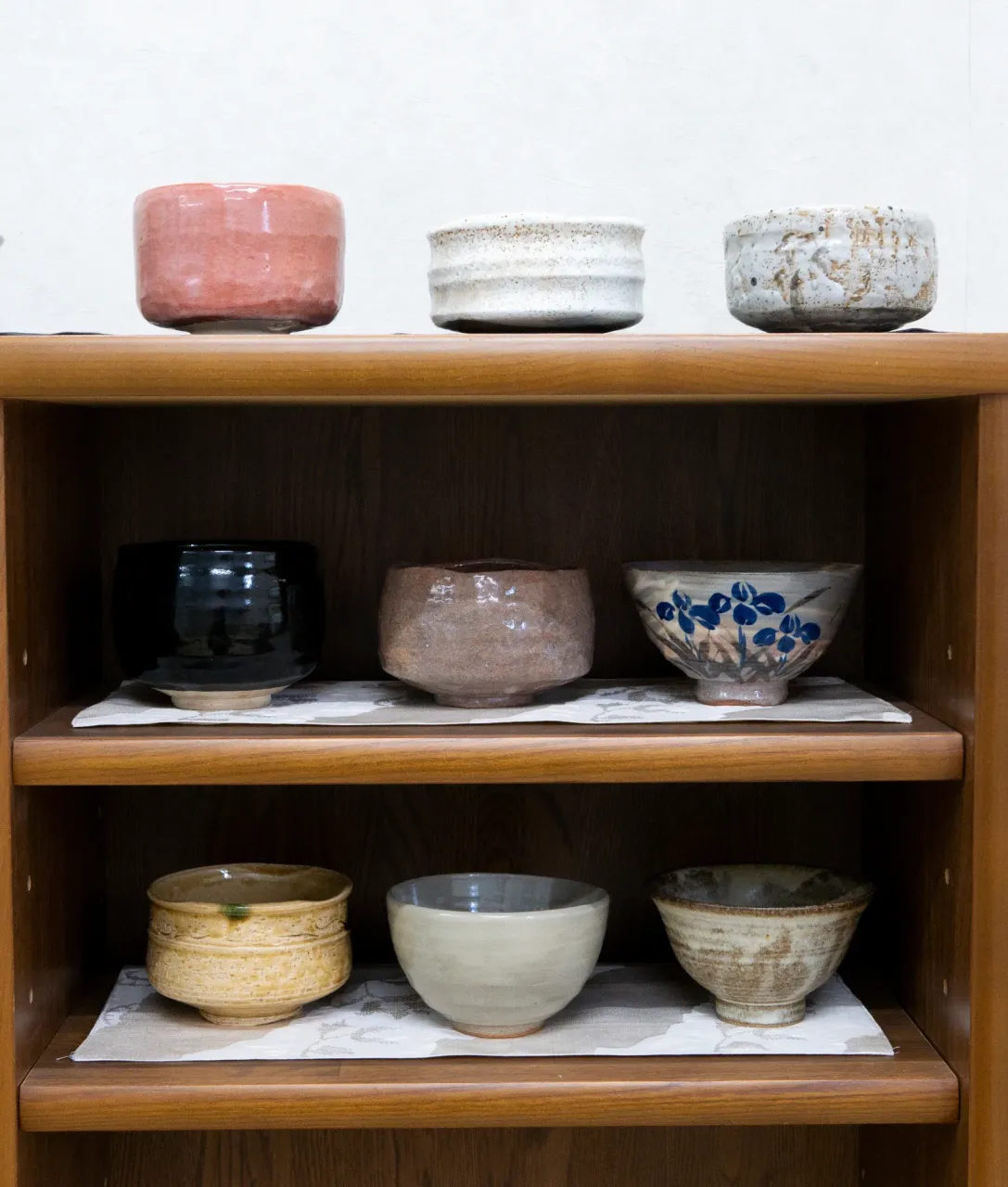
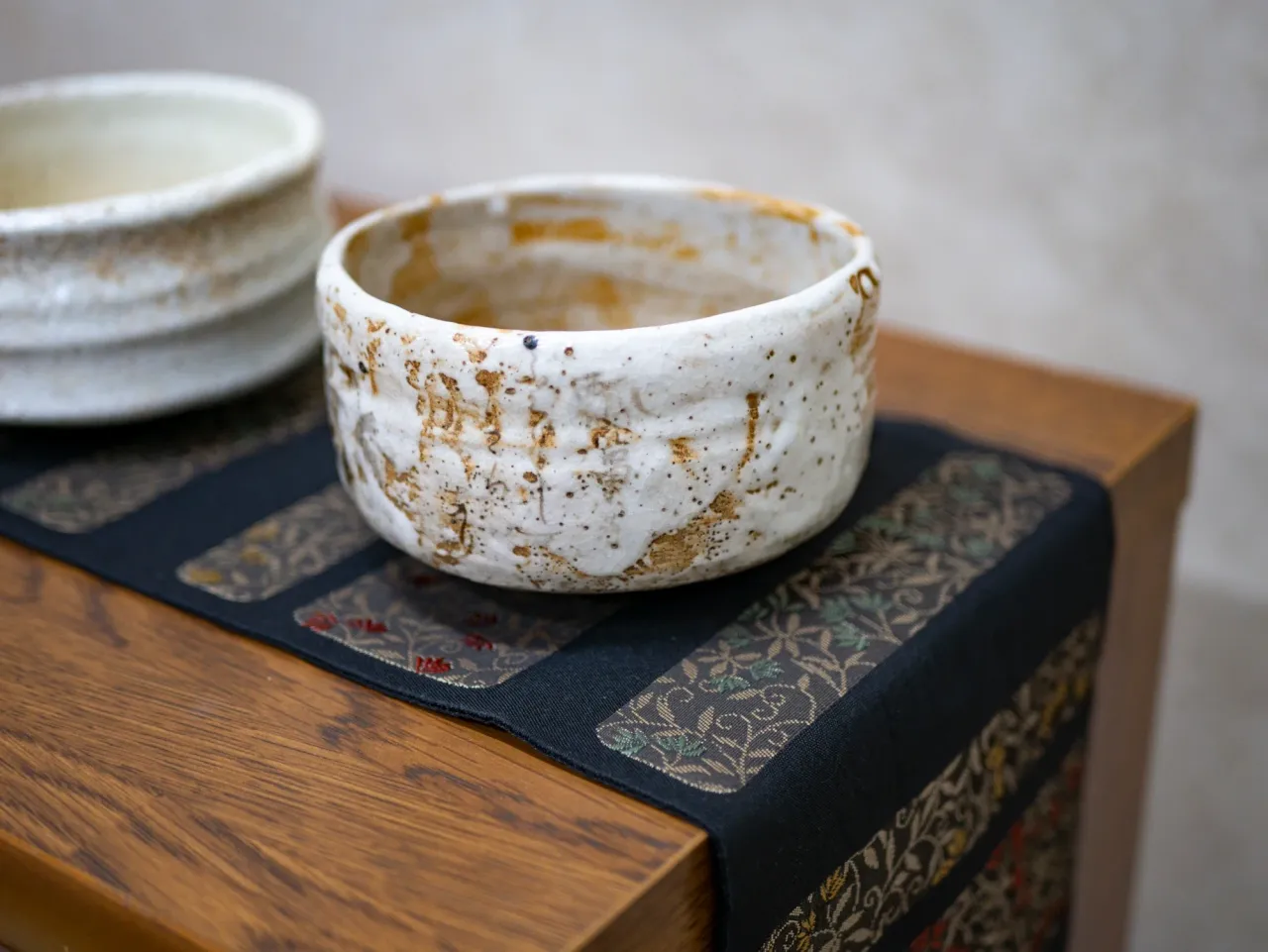
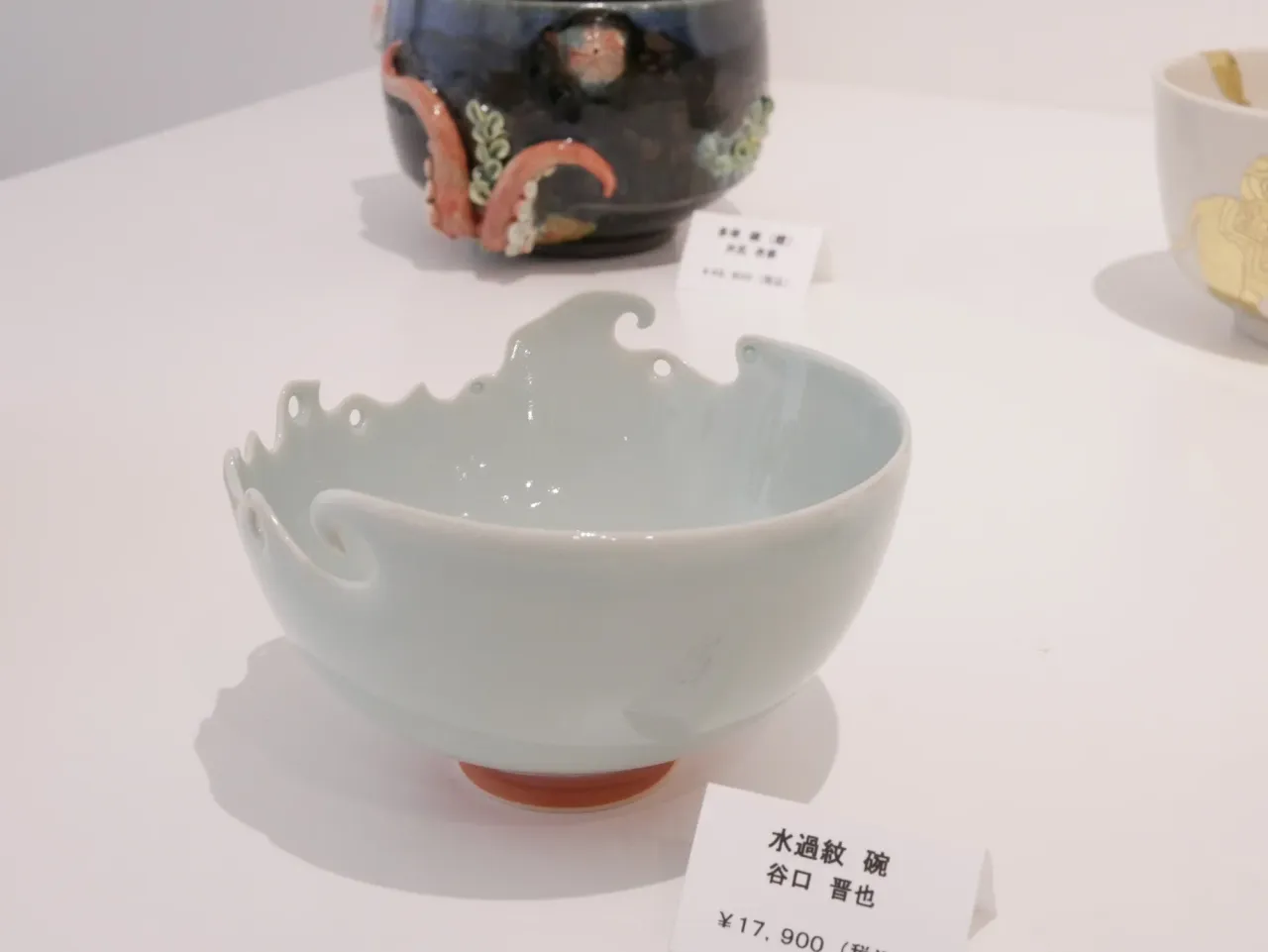
Hello everyone,
We have already talked a lot about Kyoto ceramics and matcha tea in this blog, but I realized that we had never really discussed the subject of "Chawan": tea bowls. It is a central component of the two topics previously mentioned, so I would like to cover this topic today.
Indeed, before tea was consumed as leaves as it is today (no, tea bags don't count xD), it was compressed into cakes and then ground down to powder for consumption. Matcha is a direct descendant of this tradition and one of the last teas to be drunk this way. The most amazing thing is that the way to prepare it was created by Sen no Rikyu at the end of the 16th century, and the technique has not evolved since! Indeed, the different tea ceremony schools have made it their mission to preserve this art as it was created.
The Japanese tea ceremony uses a lot of utensils, but the central element (after the matcha powder itself), is the Chawan. To prepare the tea, you have to: pour matcha powder into the bowl and cover it with hot water. The powder is actually not very soluble in water, so using a bamboo whisk (the Chasen), you have to whisk the tea to create an emulsion. That's why matcha always looks frothy.
During the tea ceremony, the process is a bit complex, but I've given you an outline of it!
The point I would like to highlight is that the preparation does not involve a teapot: everything happens in the chawan. That's why they are wide and flat-bottomed, in fact, it is necessary to be able to plunge the bamboo whisk into it and whisk the mixture inside.
The Chawan is therefore a central element of the Japanese tea ceremony, and its appearance is also very important. There are all kinds of bowls, but they are often quite sober because of the minimalist legacy left by Sen no Rikyu. However, it is also common nowadays to see Chawan with gilding or small painted animals.
What all Japanese tea ceremony bowls have in common, however, is a way to differentiate their orientation. Indeed, according to the codes of the ceremony, the host must hand the bowl to his guest with the "front" of the bowl facing the guest, who must then turn it over to face the host before drinking it. Yes, it's quite complicated, and that's why it's called a tea "ceremony"!
I'll leave you with some pictures of Chawan illustrations, traditional and modern. I hope you enjoyed this post on matcha bowls, in any case, thank you for reading to the end and as always, feel free to leave a comment!
Version Fr :
Bonjour à tous,
Nous avons déjà beaucoup parlé de la céramique de Kyoto et de thé matcha dans ce blog, mais je me suis aperçu que nous n'avions jamais vraiment abordé le sujet des "Chawan" : les bols à thé. Il s'agit pourtant d'une composante centrale des deux sujets précédemment évoqués, c'est dire si le sujet est vaste !
En effet, avant que le thé ne soit consommé sous forme de feuilles comme aujourd'hui (non, le thé en sachet, ça ne compte pas xD), il était compressé en galettes puis réduit en poudre au moment de le consommer. Le matcha est un descendant direct de cette tradition et l'un des derniers thés à être bu ainsi. Le plus étonnant, c'est que la manière de le préparer a été créée par Sen no Rikyu à la fin du 16e siècle, mais que la technique n'a pas évolué depuis ! En effet, les différentes écoles de cérémonie du thé se sont donné pour mission de conserver cet art, tel qu'il a été créé.
La cérémonie du thé japonaise a recours à tout un tas d'ustensiles, mais l'élément central (après la poudre de matcha en elle-même), est le Chawan. Pour préparer le thé, il faut : verser du matcha en poudre dans le bol puis le recouvrir d'eau chaude. La poudre est en réalité assez peu soluble dans l'eau, alors à l'aide d'un fouet en bambou (le Chasen), il faut fouetter le thé pour créer une émulsion. C'est pour cela que le matcha a toujours cet aspect mousseux.
Au cours de la cérémonie du thé, le processus est un peu complexe, mais je vous en ai tiré les grandes lignes !
Ce que l'on remarque, c'est que la préparation ne fait pas intervenir de théière : tout se passe dans le chawan. C'est pour cette raison qu'ils sont larges et à fond plats, en effet, il est nécessaire de pouvoir y plonger le fouet en bambou et fouetter le mélange à l'intérieur.
Le Chawan est donc un élément central de la cérémonie du thé japonaise et son aspect est également très important. Il en existe de toute sorte, mais ils sont souvent assez sobres en raison de l'héritage minimaliste laissé par Sen no Rikyu. Cependant, il est également courant de nos jours de voir des Chawan avec des dorures ou des petits animaux peints.
Ce que tous les bols destinés à la cérémonie du thé japonaise ont en commun en revanche, c'est un moyen de différencier son orientation. En effet, selon les codes de la cérémonie, l'hôte doit tendre le bol à son invité avec le "devant" du bol face à ce dernier qui doit ensuite le retourner face à l'hôte avant de le boire. Oui, c'est assez compliqué et c'est pour cela que l'on parle de "cérémonie" du thé !
Je vous laisse avec quelques images d'illustration de Chawan, traditionnels et modernes. J'espère que vous avez apprécié ce post sur les bols à matcha, en tout cas merci d’avoir lu jusqu’au bout et comme toujours, n’hésitez pas à laisser un commentaire !